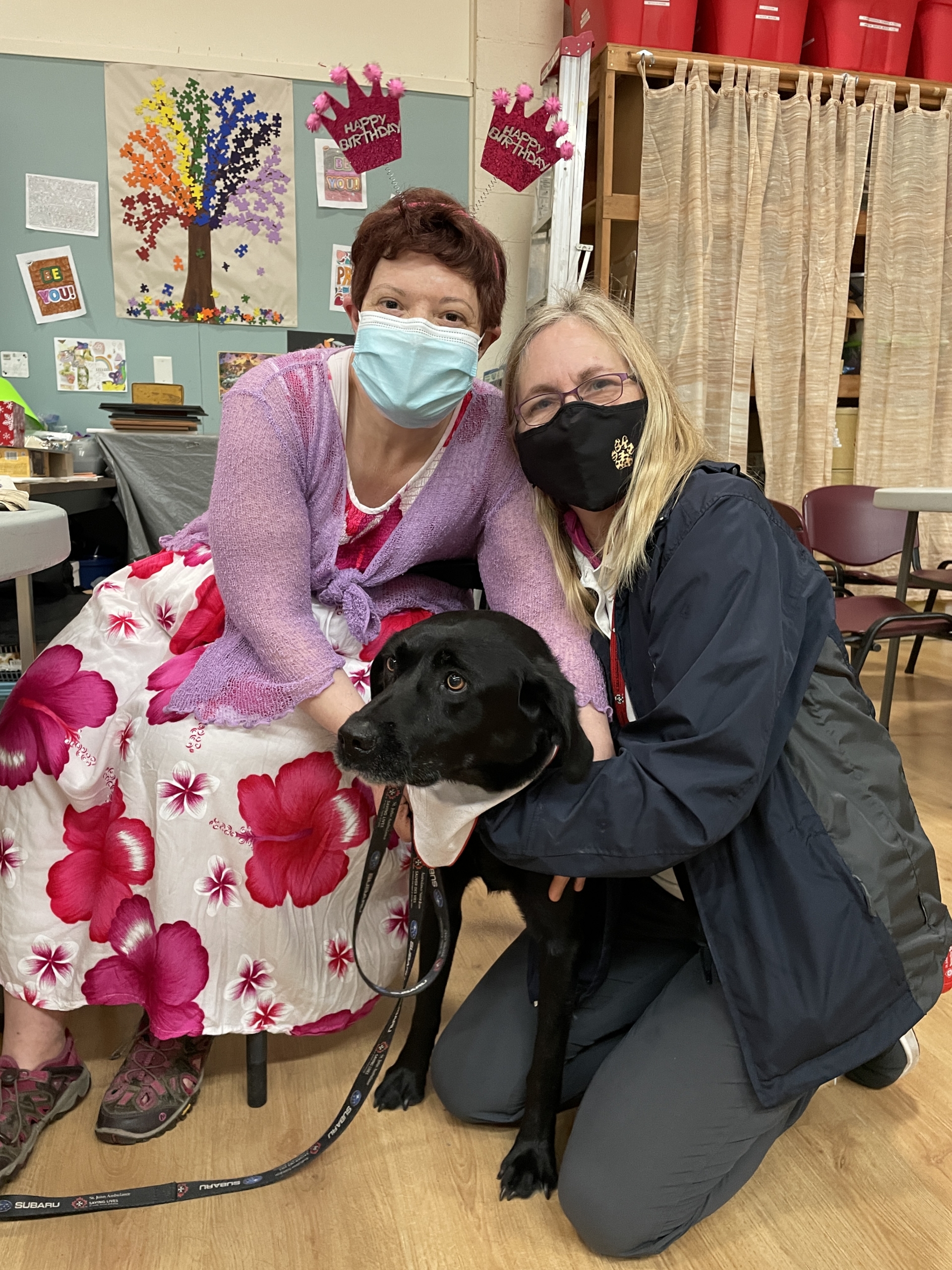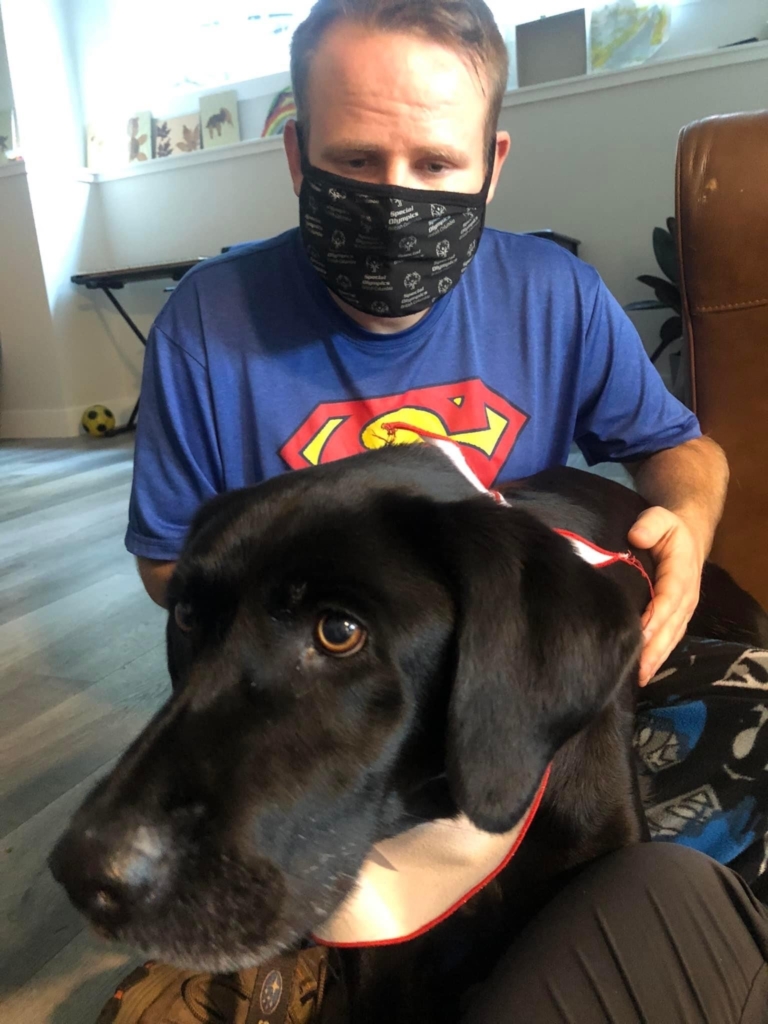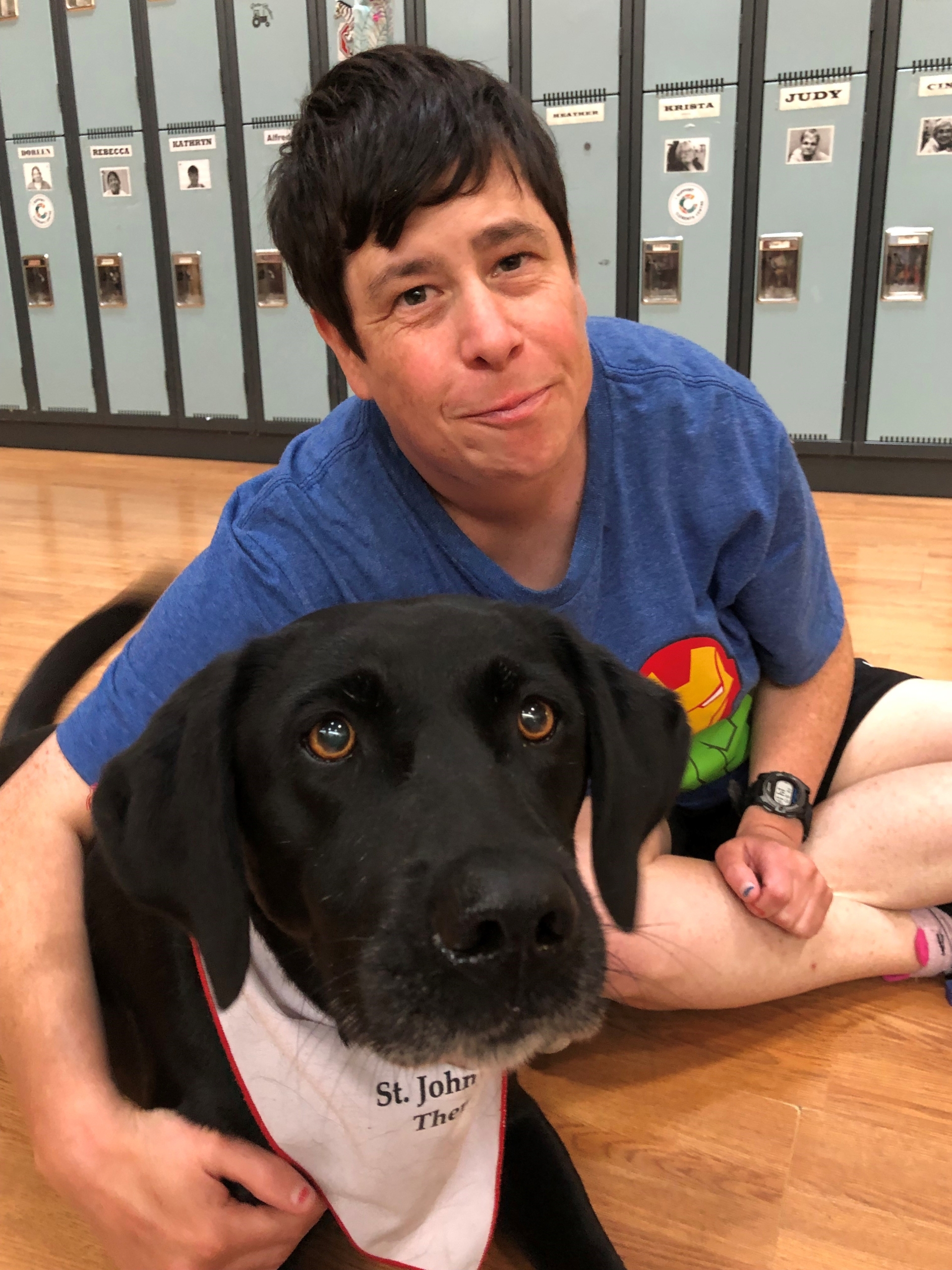St. Johns Ambulance Dog Therapy Brings Comfort
Research shows the impact of having a furry friend nearby is immense – there are proven physical, social, emotional, and cognitive benefits that come from just a few minutes of connecting with an animal. And while not everyone is able to have a pet at home, thanks to one particularly passionate volunteer and her lovely dog Jasmine, Clements Centre has been able to offer this comforting experience to people served every week for the past five years.
The St. John Ambulance Therapy Dog Program is celebrating its 30th year in Canada and its 25th in British Columbia. For decades, this program has spread joy, comfort, and connection to thousands of people of all ages, through schools, libraries, hospitals, care centers, and throughout communities. While the national program is common in health care and education centers, working with folks with developmental disabilities wasn’t common – that is, until Sandra Anderson and Jasmine became involved.
“Originally at St. John Ambulance, people with disabilities weren’t within their scope, so I brought that in because I work with these folks and it’s part of my life. I promised them, I have the right dog, I have the right skill set – and here we are.”
Anderson is the Unit Facilitator for St. John Ambulance’s Cowichan Valley Therapy Dog Program, Jasmine’s handler (and owner/playmate when the working day is done), and a parent of a young adult with developmental support needs. Her unique combination of experience – both professional and lived experience – was the perfect fit to bring this program to Clements Centre.
“Jasmine has been coming here since 2017, with a short break during the pandemic,” Sandy shares. “The first visit back was awesome. I don’t think some people realized how much they missed Jasmine until we came back. There were so many smiles.”
St. John Ambulance shares that the Therapy Dog Program helps to improve quality of life through social engagement and provides stress and pain relief, calming and comfort. Sandy agrees and shares that she and Jasmine work as a team to provide the best quality visit possible.
“As much as dogs can lower anxiety and those other things, it is about people being lonely and disconnected… I engage with people as much as Jasmine does. The dog is the bridge, that’s what the program is about. The dog just comes with extra benefits.”
For some participants, getting more comfortable around unfamiliar dogs is the main goal. Tracy Morrison is the mother of Joshua, a young man who attends one of Clements’ inclusion programs. She shares the impacts she’s observed in her son since Jasmine has been visiting his program.
“My son Joshua has autism spectrum disorder (ASD) and attends Clements’ South End Program. We have always owned dogs, but unfortunately, Josh was chased and bitten by a stranger’s dog when he was younger and is now very fearful of dogs when outside the home.
Jasmine is a calm, sweet-tempered dog and a soothing presence, and Josh has become quite relaxed and less stressed around her, and better able to stay nearby when she visits the program.
I believe everyone can benefit from therapy dog visits, at schools, airports, nursing homes, prisons, and other workplaces. We know that therapy dogs can in cases of ASD, help develop communication and social skills, improve vocalization and engagement, reduce aggressiveness and emotional outbursts, and be a ‘friend’ to them.
We hope that continued visits may help to diminish Josh’s fears over time so that when we are out and a dog approach off leash, he’s able to stand calmly by our sides and not immediately want to run. [Jasmine] is certainly a positive benefit to those around her and is enjoyed by Josh and his friends.”


